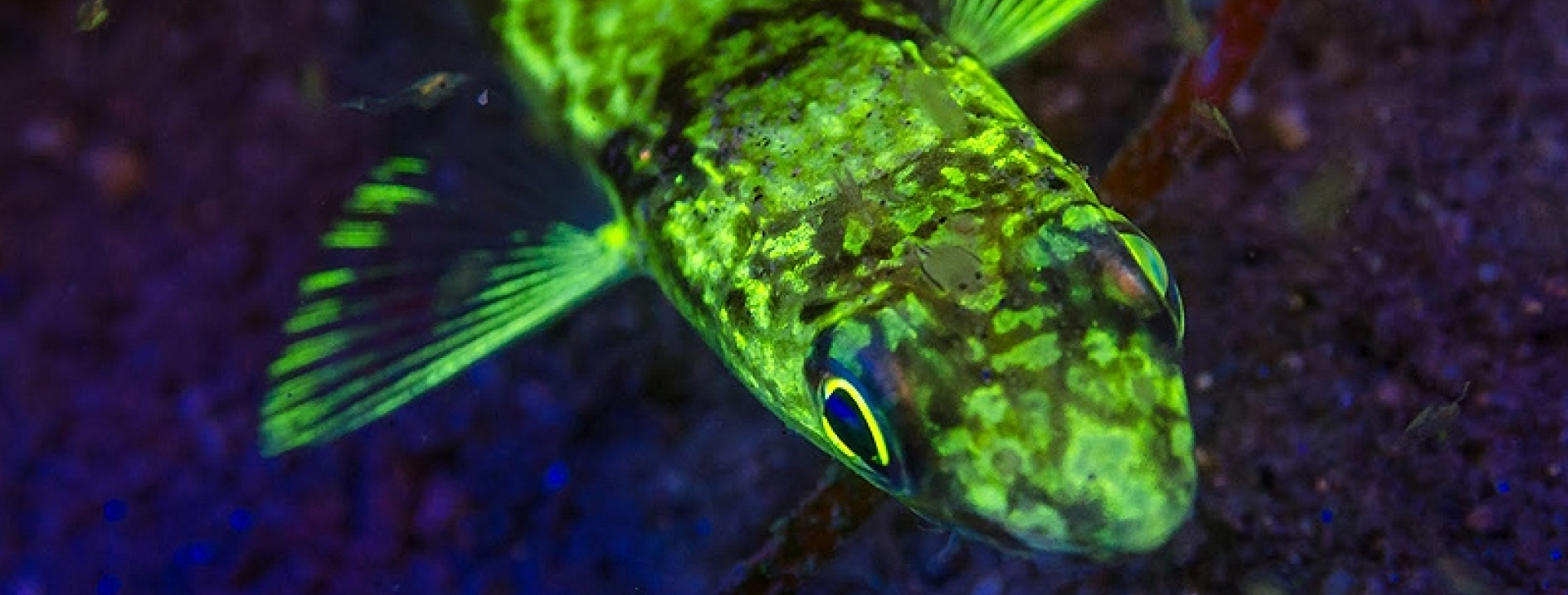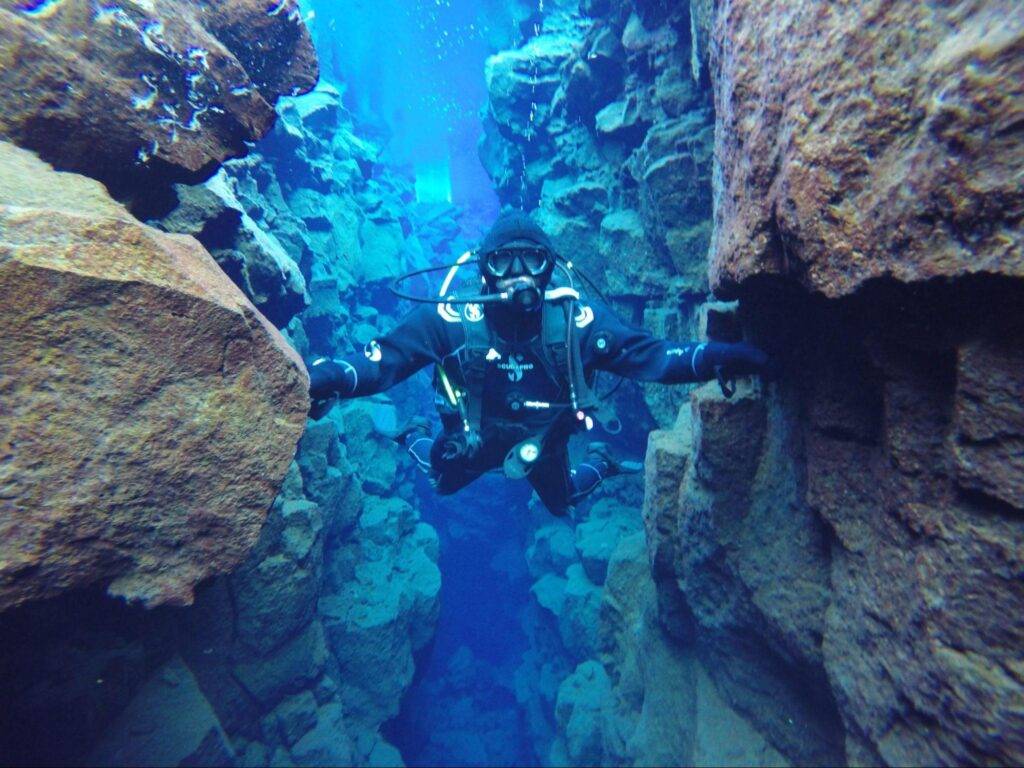
Do you need help with how to clear your ears when diving?
To dive safely and comfortably and descend deeper into the water, freedivers and bottle-divers must equalize their ear pressure.
In the beginning, it might seem as if you cannot equalize your ear’s pressure, or maybe you can only equalize it somewhat. However, if you want to reach greater depths, you must master the art of equalizing ear pressure freediving.
With proper training, equalizing your ears as you dive can help reduce discomfort and even prevent severe injury or hearing loss caused by rapid changes in pressure. In this article, we’ll discuss different techniques to equalize ear pressure, how they work, tips on where to find good training programs, and best practices when deep diving. Besides that, we’ll also talk about the type of gear and diving accessories you should have and the best safety practices to follow when diving.

Equalizing ear pressure involves using specific techniques to equalize the air pressure between the inner and outer parts of the eardrum, thus preventing pain or injury from unequalized internal forces.
Pinching your nose and gently exhaling through it until a popping sensation is felt in the ears is one of the most common methods to equalize ear pressure during dives. Other methods include the Frenzel maneuver (pushing air into the back of your throat) or the Toynbee maneuver (swallowing).
The advantages of equalizing ear pressure while freediving is numerous, including increased comfort underwater, extended dive times due to decreased fatigue from uncomfortable ear pressures, enhanced capacity for exploration at greater depths without the risk of injury or pain caused by unequalized air pressures, and improved safety overall.
Furthermore, this technique can help reduce stress levels as there is no need to be concerned about experiencing agonizing barotrauma resulting from imbalanced air pressures in one’s ears.
Equalizing ear pressure is essential to explore the underwater world, but it’s important to be aware of the risks and take necessary precautions.
Equalizing ear pressure is a skill that requires preparation and practice.
To begin, divers must familiarize themselves with the necessary techniques and equipment for when they descend. This includes items such as a mask and snorkel, fins and wetsuit, weight belt, the buoyancy control device (BCD), etc.
Once prepared, divers can then use specific techniques to equalize their ears during descent.
The most common technique is the Valsalva maneuver, which involves blocking your nose while exhaling gently to increase the air pressure inside your middle ear cavity.
Another technique is called the Frenzel maneuver, which involves pinching your nostrils shut while making a swallowing motion with your throat muscles to push air up into the Eustachian tubes of your inner ear cavities. Some people do not recommend using the Frenzel maneuver during free dives.
By learning the proper preparation, techniques, and safety tips for equalizing ear pressure freediving, you will be well-equipped and confident to explore the underwater world safely.
Training for equalizing ear pressure is essential for safe and successful dives. Courses are available from certified instructors that provide an introduction to the basics of freediving, as well as instructions on the correct techniques for equalizing ears safely while underwater.
Professional coaching can help improve skills in this area, while self-training tips can help divers practice safely on their own between dives with an instructor or coach present.
Freediving courses and certifications offer a comprehensive education in the sport of freediving, including safety protocols, breathing techniques, physiology and anatomy related to diving, relaxation methods, rescue procedures, and more.
Ear equalization is one crucial skill taught during these courses; students learn to use various techniques, such as pinching their nostrils shut or using the Valsalva maneuver to clear their ears when descending into deeper waters.
After successfully completing a course or certification program, divers will have the knowledge necessary to dive safely with minimal risk of injury due to barotrauma (ear damage).
Professional coaches are experienced freedivers specializing in teaching advanced skills such as ear equalization under pressure. They typically work with students individually, evaluating their unique needs and crafting bespoke lessons accordingly.
During private sessions, they may observe each student’s technique closely before providing feedback on what aspects need improvement.
Coaches also typically teach breath control exercises that help build confidence underwater by reducing anxiety levels before attempting deep dives where ear clearing becomes more difficult due to increased water pressure at greater depths.
We understand that self-training is very common today. However, professionals should still teach some things in person, like equalizing ear pressure.
Understanding the techniques for equalizing ear pressure when diving is vital to ensure you dive safely and effectively. We do not advise you to learn these techniques by yourself.
It is possible to overdo some of these techniques, resulting in possible eardrum rupture. Learn from a professional first, so you can then train by yourself.
Let’s look at the gear needed to embark on this exhilarating journey.
When it comes to equalizing ear pressure freediving, there is no need for additional gear; you only need your body.
However, you should train how to equalize ear pressure while wearing the same dive gear you’ll use when diving. This way, you can better recreate the actual conditions you’ll be in when trying to equalize your ears’ pressure.
A mask and snorkel are necessary for any dive. The mask must fit securely on your face, ensuring a pleasant experience that won’t cause irritation or distress even during prolonged use.
The snorkel should also fit comfortably in your mouth and have a purge valve at the bottom so that water can quickly be expelled from the tube if needed. Fins and wetsuits are also essential pieces of gear when diving.
Fins help you move through the water more efficiently, allowing you to cover greater distances with less effort.
Wetsuits provide insulation against cold temperatures, helping keep divers warm during their dives, even in more frigid waters. Both items should adequately fit, so they do not restrict movement or cause discomfort while underwater.
Other diving accessories include diving computers, diving knives, flashlights, signaling gear (to let boats know you are down there), and dive compasses.
Having the right equipment is essential for equalizing ear pressure freediving, and so is having the proper training. In the next section, we will discuss how to get trained in this type of freediving.
Let’s take a look at some of the best practices for when you start diving.
Before attempting to equalize ear pressure freediving, it is essential to follow a pre-dive checklist.
This includes ensuring all necessary safety steps are taken, such as checking the dive site for hazards and making sure the gear fits correctly.
It is also vital to plan dives carefully by setting realistic goals and monitoring air supply closely during execution. When surfacing, divers should slowly ascend in order to avoid decompression sickness or “the bends.”
Taking breaks between dives can help prevent overexertion and allow for proper post-dive care, such as stretching exercises which can help reduce muscle soreness after a diving session.
Divers should also listen to their body signals underwater, staying hydrated before and after each dive session while avoiding alcohol consumption before diving.
Eating well before diving can provide the extra energy needed during long freediving sessions, while using appropriate gear that fits correctly will ensure maximum comfort throughout the experience.
Lastly, suppose any signs of injury occur during or after a dive session. In that case, medical attention should be sought immediately to prevent further damage due to lack of oxygen intake or other factors associated with deep-sea exploration activities.
It is essential to prioritize safety when freediving. Thus, divers should adhere to certain tips at all times; such as never holding their breath during descent or ascent, ascending slowly upon surfacing, avoiding any abrupt changes in depth, being aware of signs of barotrauma (e.g., pain or discomfort in the ears), and having someone nearby who can offer assistance if needed.
Additionally, divers need to remain within their comfort zone by only diving depths they are comfortable with based on experience level and fitness level.
Do you still have further questions about equalizing ear pressure while diving or freediving? Here are some answers to the most commonly asked questions.
Free diving requires equalizing your ears to prevent damage from the pressure changes that occur when you descend into the water.
To do this, pinch your nose and gently blow air into it while keeping your mouth closed. This action forces air up through the Eustachian tubes, which equalizes the pressure between your inner ear and outer environment. You can also try swallowing while your nose is blocked.
With practice, these techniques can be used safely and effectively to ensure safe free dives.
Freediving can cause significant pressure buildup in the ears, leading to pain and discomfort.
To prevent this, equalizing your ears by gently blowing or swallowing while descending underwater is essential.
In addition, taking decongestants before diving can be beneficial to help with equalization.
Finally, make sure you ascend slowly from dives and avoid any sudden changes in depth that could increase the pressure on your eardrums. With these tips in mind, you should be able to safely enjoy freediving without worrying about painful ears.
The maximum depth a freediver can reach without equalizing depends on the individual’s physiology, experience level, and training.
Generally speaking, most people will have difficulties going beyond 6 feet deep before they feel the need to equalize. Even at shallower depths, proper technique must be used in order to avoid barotrauma or other serious injuries.
Freediving equalization should be done regularly and often. It is essential to practice proper technique, as this will help prevent any issues from arising during a dive.
Equalizing should be done during every descent. This helps ensure that pressure changes are managed properly and safely.
Additionally, it is recommended to perform equalization exercises between dives in order to maintain good technique and keep your body used to the process. Doing this will help you stay safe and enjoy your freediving experience.
Equalizing ear pressure is a crucial skill for any diver or freediver. Failure to equalize can cause pain, discomfort, and potentially severe injuries such as ruptured eardrums or inner ear barotrauma.
It requires patience, practice, and dedication to ensure safety while diving, but with proper techniques and best practices in place, equalizing ear pressure can help divers reach greater depths safely and confidently.
As always, it’s essential to consult an experienced instructor before attempting deep-water dives or activities involving equalizing ear pressure.
Whether you are beginning your diving adventure or are an experienced diver, be sure to check out our store. We have diving gear for all levels of expertise and diving niches.
If you have any questions, comments or suggestions – PLEASE don’t hesitate to contact us.